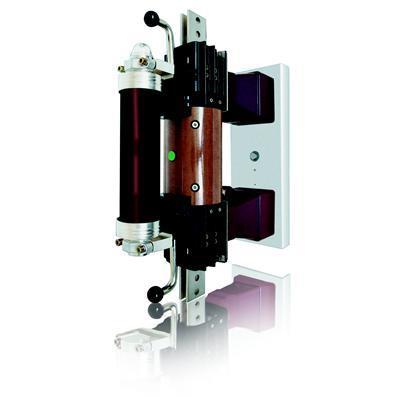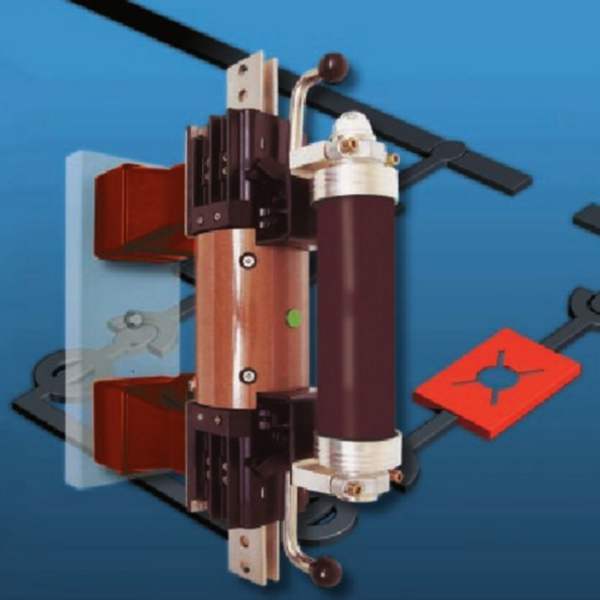Current Limiter
Current limiter (also known as Is limiter) is essential in a power distribution network routed from several sources, such as the short circuit capacity is not equal across the channels. For instance, there are three sources of power being combined: secondary grid (12,5kA), primary grid (25kA) and generator. Whenever short circuit occur, the resulting current surge will cause major damage to components pertaining to the source with the smallest current delivery ability.
To anticipate such occurences, electrical power system should include protection of short circuits by employing current limiter. At Adidaya, our expert team can help you design electrical system with adequate safety and efficiency, including installation of current limiter where necessary with a selection of quality field-tested equipment.
Is-limiter – the solution for high short-circuit current applications.Replacement of existing switchgear and cable connections with new equipment with higher short-circuit ratings can be technically impossible. The use of Is-limiters reduces the short-circuit current in extensions of existing systems and in new systems.
The Is-limiter is capable of detecting and limiting a short-circuit current during the first current rise, i.e. in less than a millisecond.
Ratings
Rated voltage (kV) 0.75 – 41.5
Rated current (A) 630 – 5000
Rated breaking current – symmetrical (kA) rms 140 – 210
The trend towards higher line kVA ratings and the growing interconnected of power systems are increasing the likelihood that distribution switchboards will be subjected to unacceptably high short-circuit currents. Reliable and economic protection against these surge currents is provided by the Is-limiter. This fast-acting switching device triggers a small charge to open the main conductor, which is designed to carry high operating currents. The current commutates to a parallel fuse with high breaking capacity, which limits the short-circuit current during the first rise. Is-limiters are being used successfully in more than 2.500 stations in 70 countries.
Such a fast switching device caters for a variety of applications which cannot be fulfilled by conventional switches. The most important of these are presented below.
Coupling – parallel operation of two systems
Is-limiters are frequently used in the coupling between two systems or parts of systems whose short circuit withstand capability would not be sufficient with parallel connection via a circuit breaker .
Instead of designing the two systems for double the short-circuit current, an Is-limiter is installed in the coupling. In the case of a fault, it limits the peak short-circuit current at the very first rise. It separates the systems electrically into two parts before the short-circuit current can endanger system components. After separation, only the faulty part of the system still feeds the short circuit, which is selectively shut down by the relevant circuit breaker. The peak short-circuit current thus does not become higher than the short-circuit current from a single transformer at any point in the switchgear. When the Is-limiter trips, the voltage in the part of the system not affected by the short circuit only drops for fractions of a millisecond at most.
Even sensitive loads are thus protected from voltage dips. The Is-limiter is therefore also highly suitable for installation in the coupling between an ”unprotected” an a ”protected” system.
Station service supply and public network
More and more frequently, systems for the in-house supply of power, operated in parallel with the public supply network, are encountered in industrial and service operations. If a fault were to occur in the public network, the additional short-circuit current from the station service supply facilities would cause the permissible levels in the utility network to be exceeded.
The most technically appropriate – and frequently also the only – solution: the use of an Is-limiter in the coupling to the public supply network. If necessary, the Is-limiter can respond to a directional tripping criterion. This requires three additional current transformers in the main star point lead of the generator. With the directional tripping criterion, the Is-limiter only trips in response to short circuits in the public supply network.
IS-limiter in the generator feeder to protect the high voltage system
Deregulation of the market leads to installation of many additional generators. For this reason the short-circuit currents on the high voltage level will be too high. By using the Is-limiter the high voltage level will be protected against the short-circuit currents fed by these generator feeder.
IS-limiters and reactors connected in parallelI system components are not to be totally isolated in the case of a short circuit, but further supplied via a short-circuit current limiting reactor, the reactor can be bridged by an Is-limiter in normal operation, so as to avoid the copper losses, voltage fluctuations which would otherwise occur during load changes and the electro-magnetical influences causes by each reactor. connected in parallel in both incoming and outgoing feeder.
When several Is-limiters are installed in a system, additional tripping criteria can provide for selective tripping. In such cases, only that Is-limiter which is closest to the fault location is tripped.



